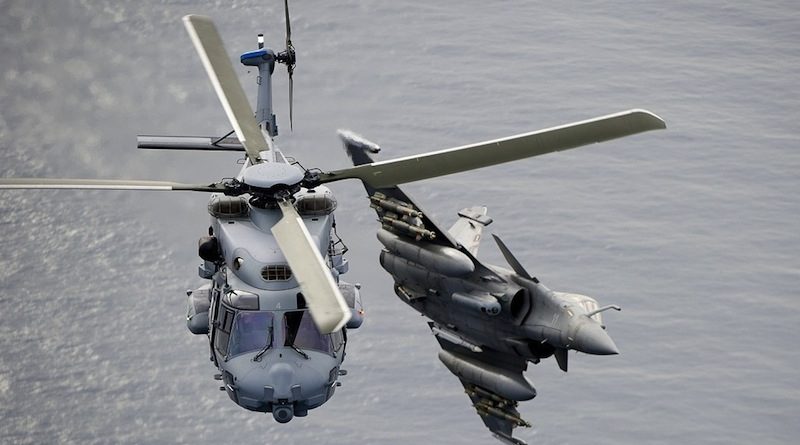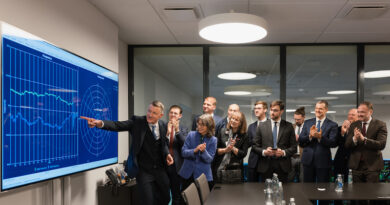
Implementing the European Defence Fund and the Action Plan on Military Mobility
The last four years following EU’s global strategy 2016, we achieved substantial progress towards our common goal of a European Defence Union. Especially with regard to the increasing numbers of crisis and conflicts, the re-emergence of power politics and a currently difficult transatlantic partnership, a capable European Defence Union is needed more than ever to contribute to our citizen’s security.
In that regard, the creation of the European Defence Fund (EDF) in 2017 marks an important step forward that aims at improving EU’s military capabilities by facilitating joint research and development. The initial EDF for the period 2017 to 2020 provides a budget of €90 million for research projects exclusively financed by the EU and €500 million to co-finance capability development with the EU member states which provide 80% of funding. This first EDF is implemented through the Preparatory Action on Defence Research (PADR) and the European Defence Industrial Development Programme (EDIDP). Until today, 18 research projects have been launched within PADR. The seven projects launched this year cover a range from research on electromagnetic railguns, quantum communication and navigation to interoperability of unmanned systems in which 65 companies and research institutes from 15 member states participate. The EDIDP is structured along 19 capability categories within five clusters that cover inter alia operation enabling capabilities, intelligence and communication, ground and air combat capabilities, artificial intelligence. The EDIDP also contains a dedicated budget of €17,7 million for projects of Small and Medium Enterprises.
By building on the Capability Development Plan and contributing to projects within the Permanent Structured Cooperation (PESCO), the EDIDP ensures coherences between the different EU defence initiatives.
For example, within the EDIDP budget €137 million are designated to support the PESCO projects for the development of a European remotely piloted air system and secure defence communication systems.
While we achieved quite some progress in the area of joint capability development through the initial EDF programs and PESCO, an effective European security and defence policy requires also the means to deploy these capabilities as addressed by the Action Plan on Military Mobility published in March 2018. As the plan points out, military mobility does not only consist of developing and maintaining a transport infrastructure that fits to military requirements but also of harmonization of customs, border and tax regulations as well as agreed procedures between EU and NATO. The development of the physical infrastructure is mainly implemented within the Connecting Europe Facility that finances dual-use infrastructure projects while the harmonization of regulations and procedures takes place in various settings: Since 2018 24 member states are cooperating in a PESCO project under Dutch coordination to simplify and harmonize cross-border military transport. Additionally, following the joint EU-NATO declaration in 2018 which defines military mobility as a main area for cooperation, a structured dialogue between EU and NATO with several regular meetings per year was initiated. In May 2019, the European Defence Agency, being responsible for monitoring the progress on military mobility, launched another project aiming at the harmonization of cross-border administrative procedures with a focus on surface and air movements in which 23 Member States are participating.
With this project, EDA builds on two older projects on EU Transport Hubs and on diplomatic clearances in the context of the European Air Transport Fleet.
Furthermore, in 2020 two legislative acts were adopted to facilitate military mobility and improve coherence to NATO standards: In January, the European Council adopted a directive on VAT exemptions for supplies to armed forces operating outside their home country and in July the European Commission amended the Union’s Customs Code introducing the “EU form 302” which like the NATO form 302 regulates the movement of goods in the context of military operations.
The various EDF projects and the different initiatives on military mobility as outlined above illustrate that the implementation of the European Defence Union moves forward. However, we are still at the beginning of this process and the progress achieved so far can only be considered as a point of departure. We need to build on this foundation in order to achieve our declared level of ambition. Unfortunately, the European Council does apparently not share this perspective as illustrated by its budget proposals which undermine the long-term goal of a European Defence Union. That becomes most visible in the proposed budget lines for the next EDF and military mobility. The Commission’s initial proposal for the EDF of €11,45 billion has been cut down to €7,01 billion and funds for military mobility were reduced from €5,76 billion to €1,5 billion. To justify these cuts with the efforts needed to recover from the COVID-19 pandemic is simply short sighted. Investments in defence also contribute to economic recovery which applies to investments through the EDF that supports a high-tech industry and even more to investments in military mobility. Considering that civilian and military infrastructure needs overlap to 94%, the civilian economy would be in the first line of beneficiaries. Accordingly, my colleagues and I in the European Parliament engage in the current negotiations for a defence budget that safeguards Europe’s strategic interests and the security of its citizens.




